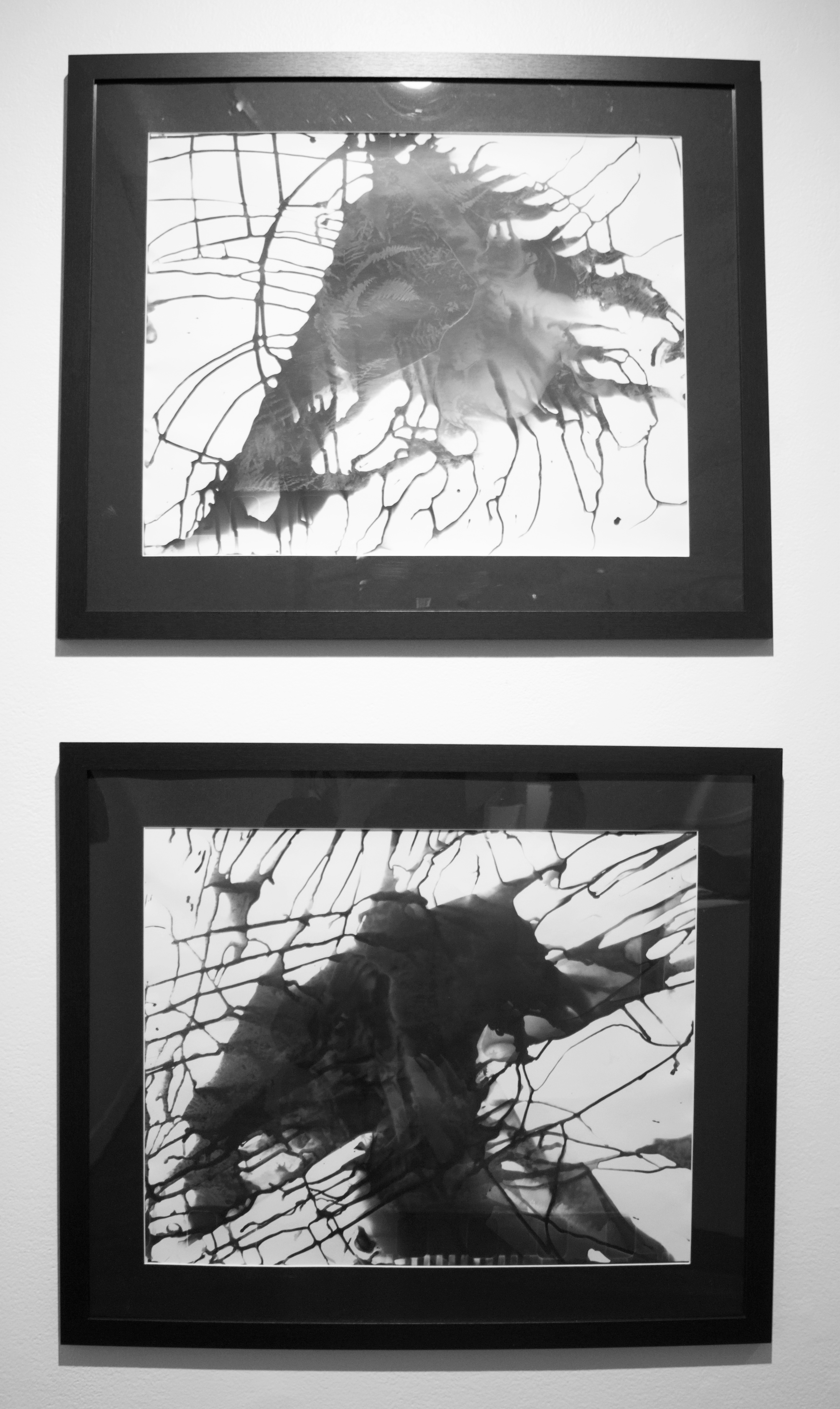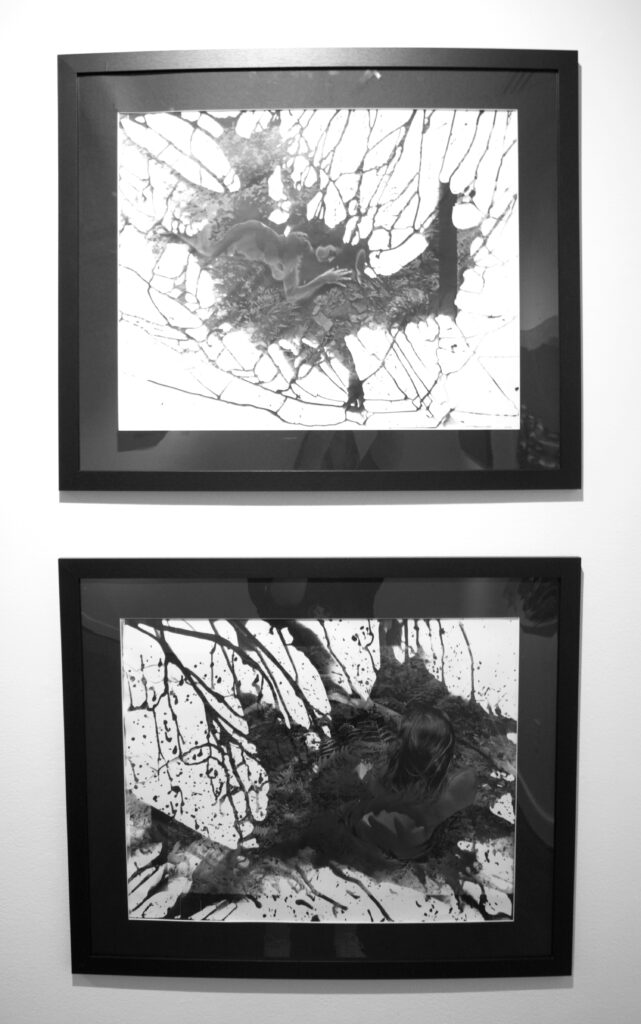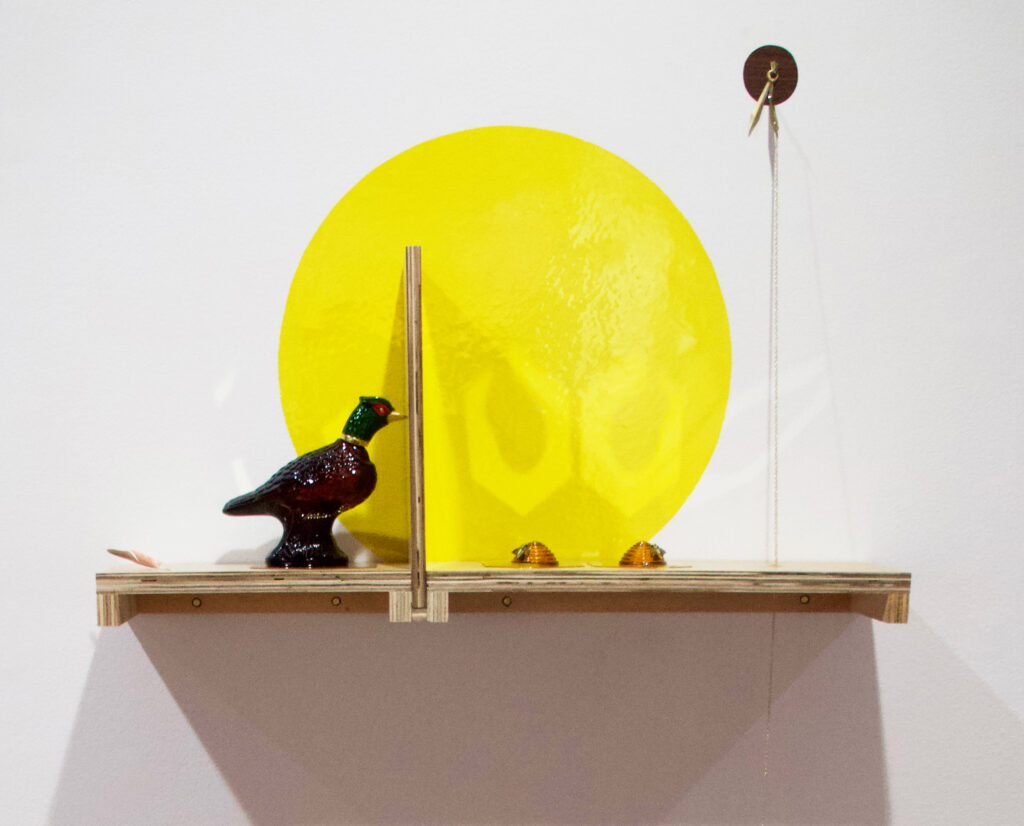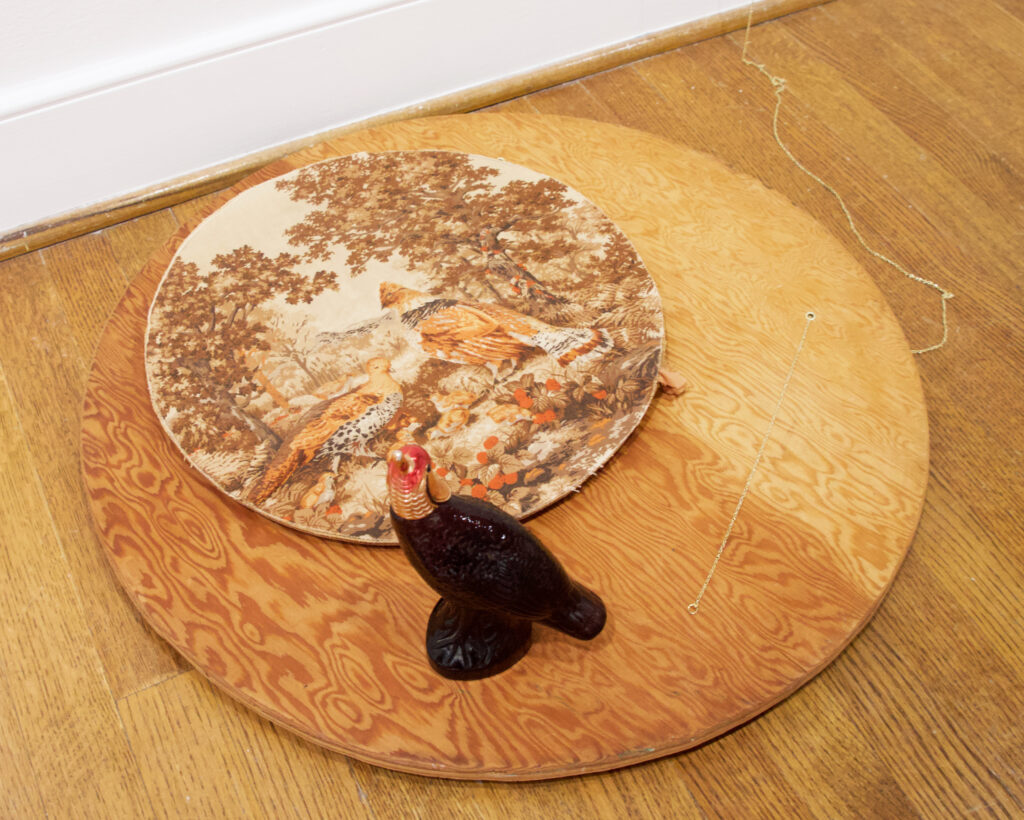Photo essay: From canvas to close-up, UMW Faculty Art Exhibition wraps up its reveal
3 min read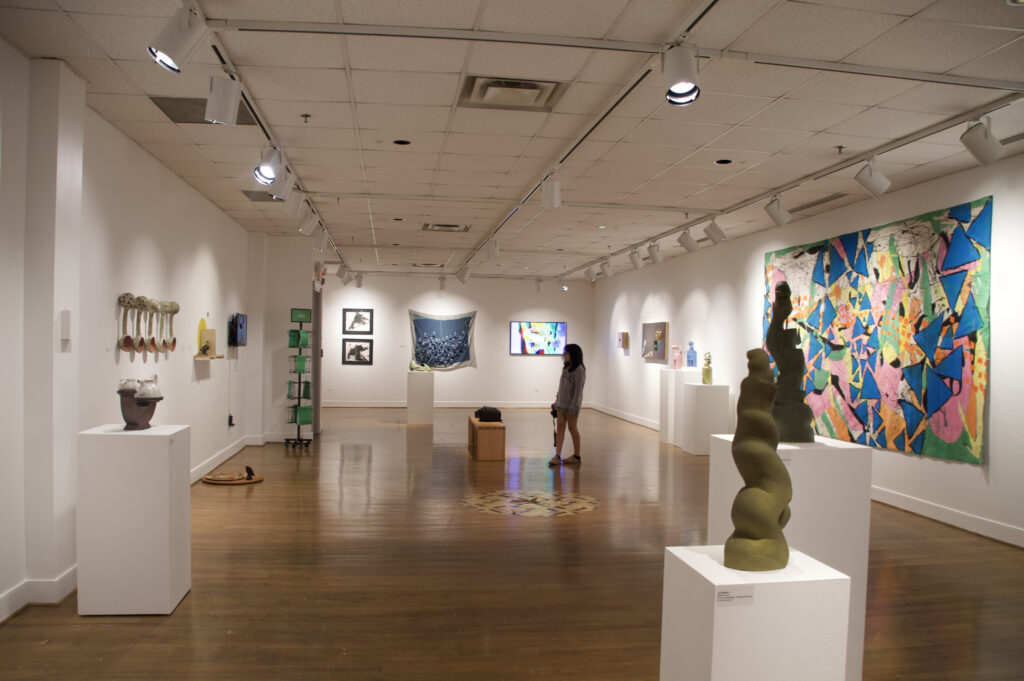
The Faculty Art Exhibition took place from Sept. 7 through Oct. 8. | Abbey Magnet, The Weekly Ringer
by ABBEY MAGNET
Photo Editor
Every year, Mary Washington hosts the Faculty Art Exhibition which includes work created by professors within the studio art department. Professors chose which pieces of theirs they would have on display. The exhibit opened on Sept. 7 and closed on Oct. 8, and the following professors included their pieces in this event: Aimee George, Ashe Laughlin, Carole Garmon, Chad Mundie, Jason Robinson, Larry Hinkle, Lindsey Arturo, Jon McMillan, Margaret Meehan, Michael Dean, Miranda Reighhardt and Sarah White.
I thoroughly enjoyed being able to see the works of such devoted artists, especially as a student who has been taught by some of these incredible professors. I was privileged enough to be able to attend the artist talk which occurred on Oct. 5., where George, Robinson and Garmon, three of the 12 artists, spoke about their work.
AIMEE GEORGE
Aimee George explained how she experiments with chemical painting and pouring on her film prints. George captured an idea of the interaction with nature with her artwork, as she utilized prints that reflect how the natural elements can influence us. She explained how she used a variety of elements while creating her work, including ether, air, fire, water and earth. She depicted her piece as having a push and pull concept where you are unsure which way it is leaning. Does it depict a birth or a death? Are they coming or going?
“When I went to make these, I just started playing around with pouring. And then after I poured, I would literally dance around in the darkroom.”
Professor Aimee George
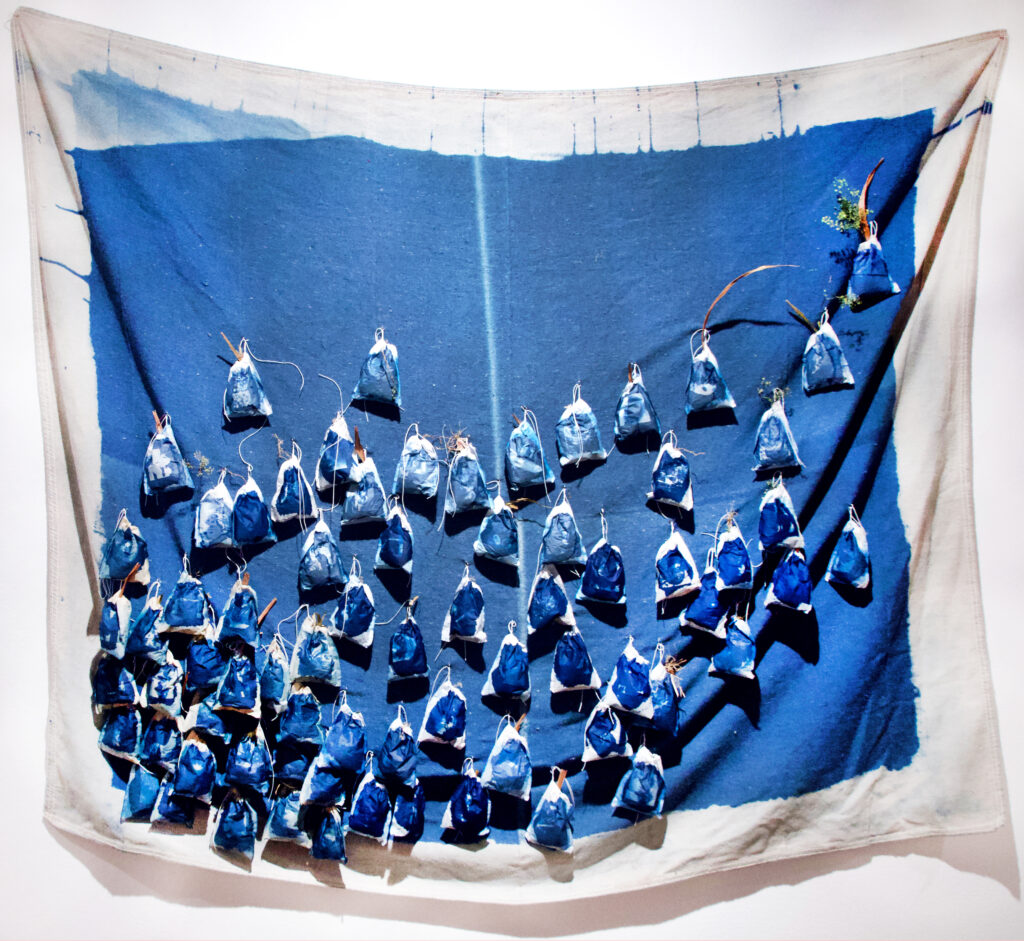
Aimee George experimented with cyanotypes—a historical photography process—and photo painting onto tea bags for her piece. What were originally “messups,” from a different project, George turned these tea bags into a beautiful piece of art that represented her “Long Year.”
CAROL GARMON
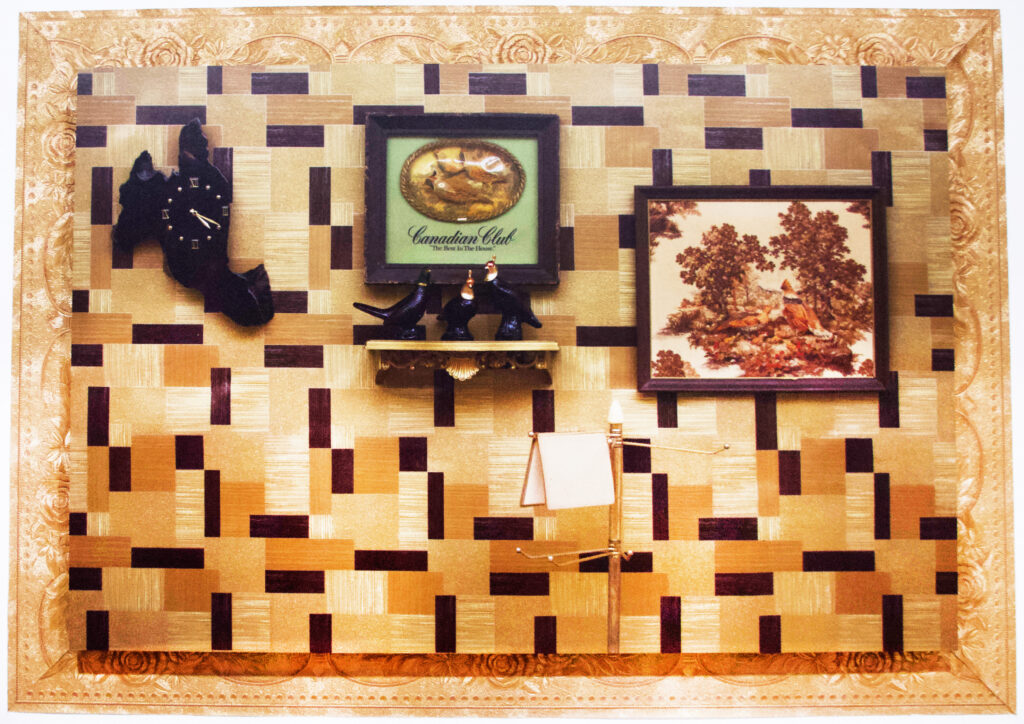
Carol Garmon’s first piece of her series, titled “A Taste of Honey,” is a digital photograph placed on top of paper. Her piece focuses on the objects that can be found within the image, which represent her life journey, beginning with her time as a child. This piece sets the stage for her three other pieces within the series that all surround the idea of honey being a nurturing substance.
Garmon’s second piece in the series is a wall piece. She emphasized her goal of using concepts from the original piece and how she displayed it in a way that “dismantles time.” She further explained that the piece moves to the floor to indicate that she is “letting it go wherever it wants.”
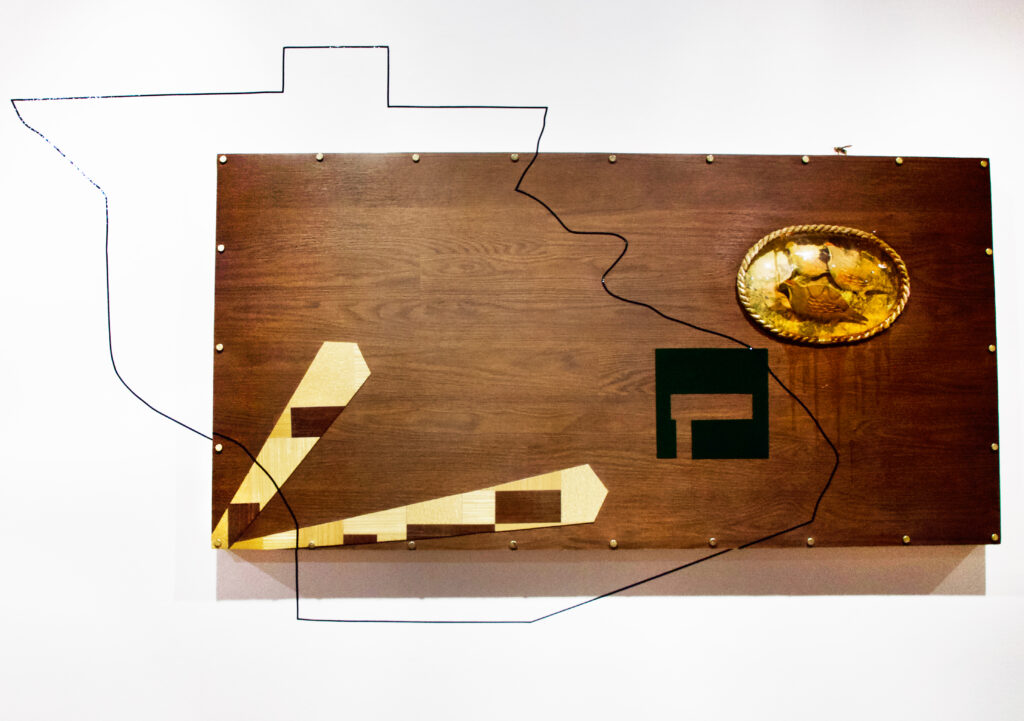
Garmon’s third piece in the series, “A Taste of Honey,” is a second wall piece, which represents her family home. Her piece includes an outline of the subdivision of her home in Texas, a photo from a fragment of the original artwork, clock hands and a small replication of her family home’s surrounding structure.
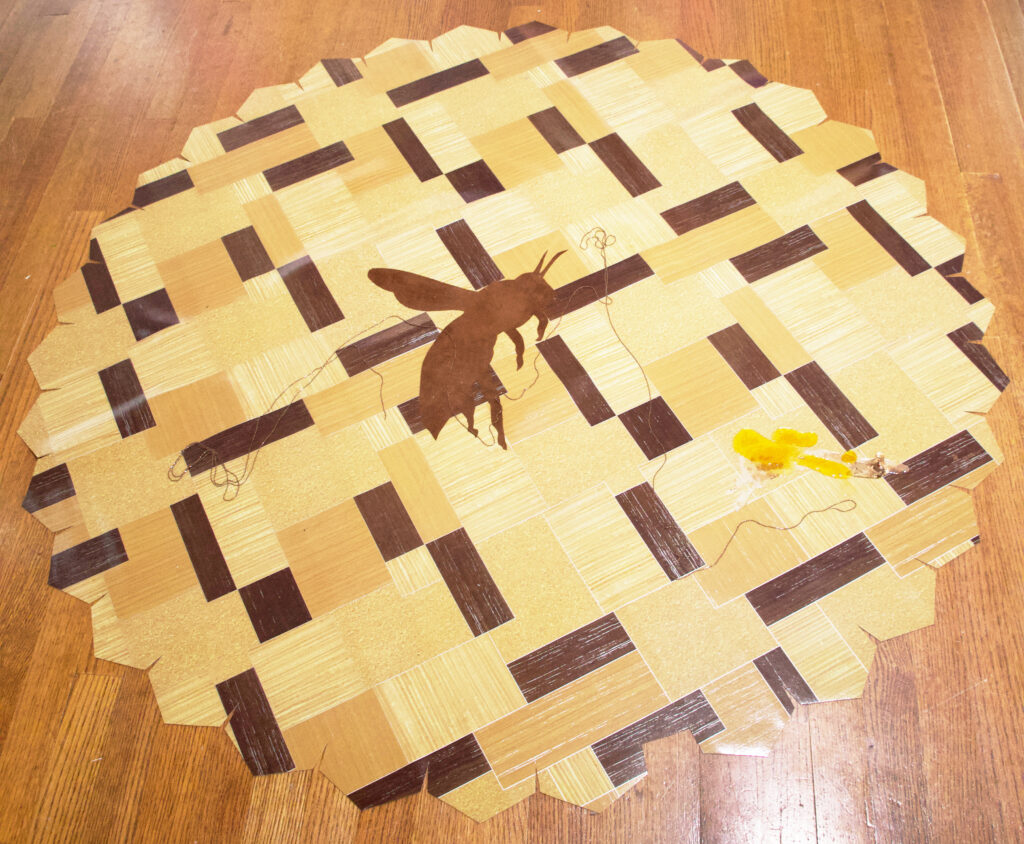
Carol Garmon’s, fourth and final piece in her series—found at the center of the gallery— is made of linoleum and fabric. This piece includes a small gold chain that represents the journey that the bee has taken.
JASON ROBINSON
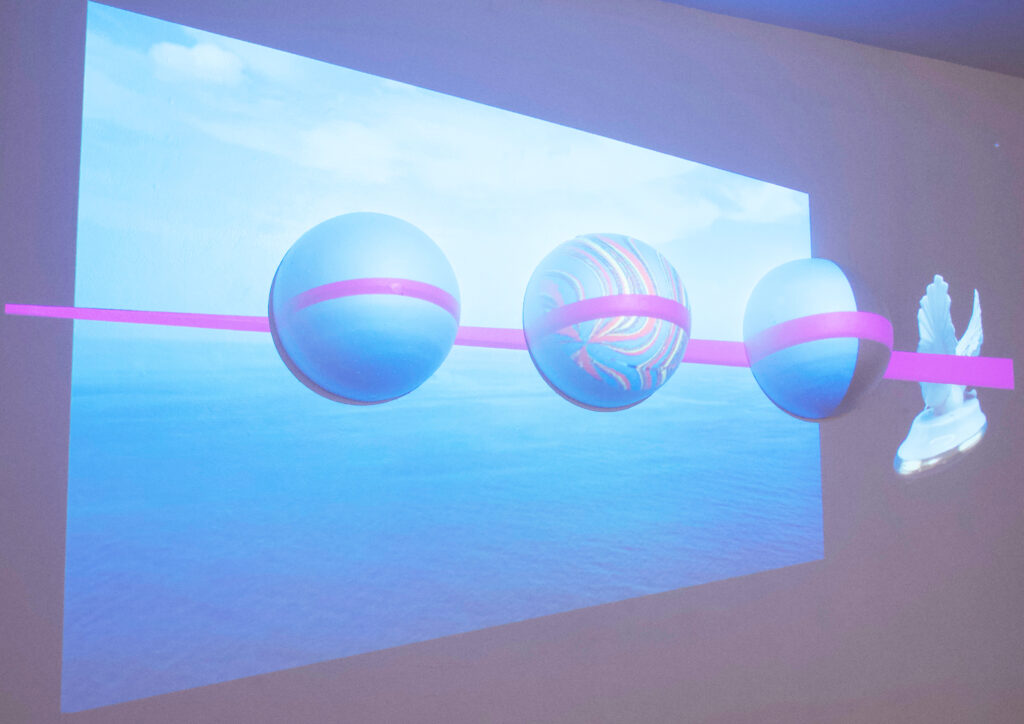
Jason Robinson’s “School Air” is a digital video that works alongside sounds that have subliminal messages. His digital image is meant to be seen while one listens to the “School Air” sound. The concept is centered around the idea of students looking their best at school because school air supposedly affects one’s hair and skin.
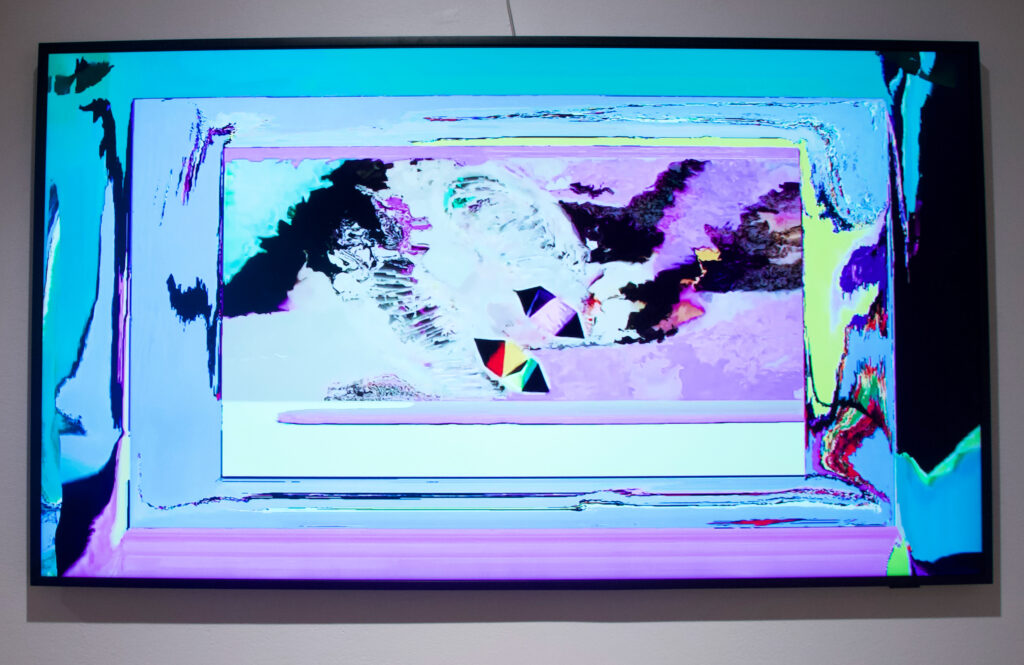
Robinson’s “Supersize Cellular Revolution,” is a digital video that utilizes the ideas of materiality and eraser and replacement. He used a drone to capture the main video, which includes two supercellular revolution kites. Robinson then removed everything from the video, except for the kites and had the computer replace the parts that were taken out. This piece allowed Robinson to push technical boundaries and discover its incredible abilities.
